Earthquakes and wooden architecture
Earthquakes caused the death of millions of people in many countries of the world: in China, Nepal, Chile and Italy. Some buildings cope well with stress caused by shocks, others very quickly get destroyed ...
Dharahara
A few minutes before noon April 25 2015. Earthquake with magnitude 7.8 on the Richter scale, which affected Nepal, among others the cities of Patan, Kathmandu and Bhaktapur - and seven UNESCO World Heritage Sites.
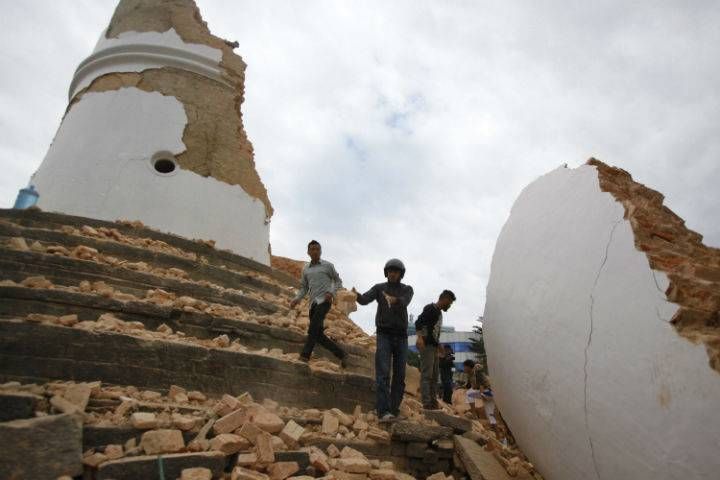
Ruins of the Dharahara tower in Nepal
One hundred and eighty people died when the Dharahara tower, two hundred feet high in the center of Kathmandu, collapsed. In the whole of Nepal, 1,800 people died as a result of this tragedy.
How have earthquakes been dealt with?
A great example is Japan. Japan, from the seventh century AD was touched by quakes with strength 7 or more up to 46 times. Still, there are many buildings that have survived most or all of these earthquakes. How did the Japanese adapt to these cataclysms?
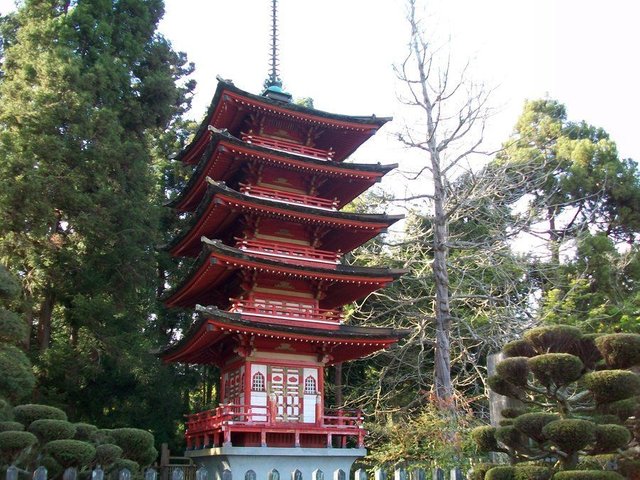
Features of Japanese buildings resistant to shocks
The basic feature of all traditional buildings in Japan is the construction material. It is wood. Wood has an advantage over brick structures, primarily in strength in relation to weight. Wooden structures are able to wobble or tilt in small or medium shocks, but they do not collapse. They can withstand much stronger seismic stress. In addition, if there is a catastrophe - the structure is much lighter - up to four or five times lighter than brick structures. This means that possible losses and damages are smaller.
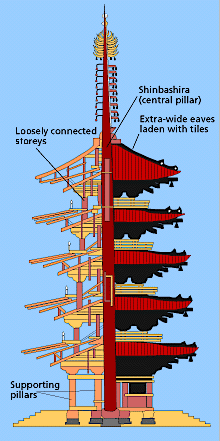
A unique method of constructing pagodas
Pagoda structure
Pagodas are Buddhist or Shinto shrines built not only in Japan but throughout East Asia. To Japan, the technique of their construction reached China in the seventh century. [2] Quickly, however, the Japanese began to introduce their own ideas, because conditions in Japan proved to be heavier - more rain, more earthquakes. First of all, they started to build them from wood (they were mostly made of stone in China).
In addition, the roofs have been much more extended beyond the building's outline - to prevent rains that could damage the structure of the building.
The most unique element is sinbasira - the central column, which, contrary to appearances, usually does not carry the weight of the structure. It is just the opposite. This element is attached to the top of the building, and being a great pendulum, increases the building's resistance to seismic shocks.
Nowadays, similar technologies are used in anti-seismic building. Tuned Mass Damper are heavy objects mounted on the highest floors of skyscrapers that are supposed to counteract the effects of earthquakes.
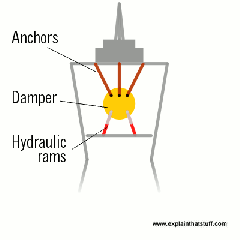
Wooden construction as a response to earthquakes nowadays?
In modern wooden construction, there are two most important technologies for building buildings - frame and solid wood (CLT). As I mentioned in previous articles, wooden construction is very beneficial for the environment. Wooden elements are CO2 storage - that is why wooden buildings have either very low CO2 emissions in the construction process or they may even have a negative one!
CLT boards provide exceptional load resistance due to their stability and stiffness. They allow building much higher buildings than a light frame construction. There are already several dozen-storey buildings with CLT, but there are already several projects of much higher wooden buildings, reaching up to several dozen floors!
( )
)
Experts have already performed a lot of CLT analysis and seismic tests and have proven that they work perfectly without any deformations, especially in multi-storey applications. Experts tested a seven-story building in Japan and found that after fourteen consecutive seismic events, the building was virtually non-damaged.
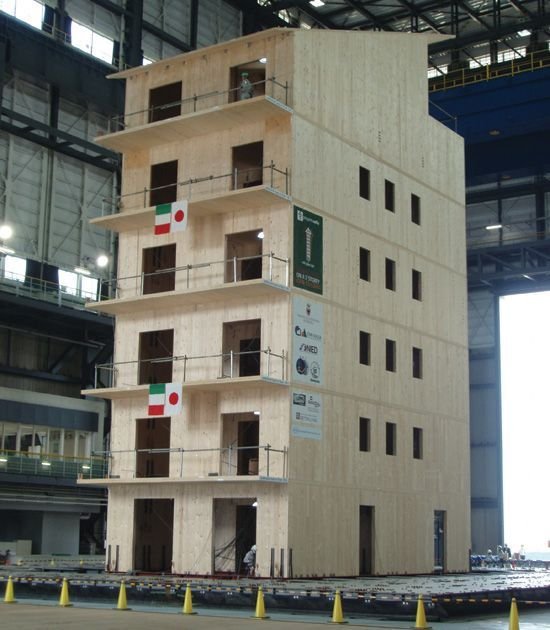
The CLT building tested in Japan on the world's largest earthquake simulation device has successfully passed 14 simulated shocks.
Summary
Earthquakes have always accompanied humanity. Builders and architects in seismically active areas must take into account the impact of this threat on the structure. Wooden construction is the perfect answer to this problem. When using CLT, you can build very high, multi-story buildings, resistant to earthquakes.